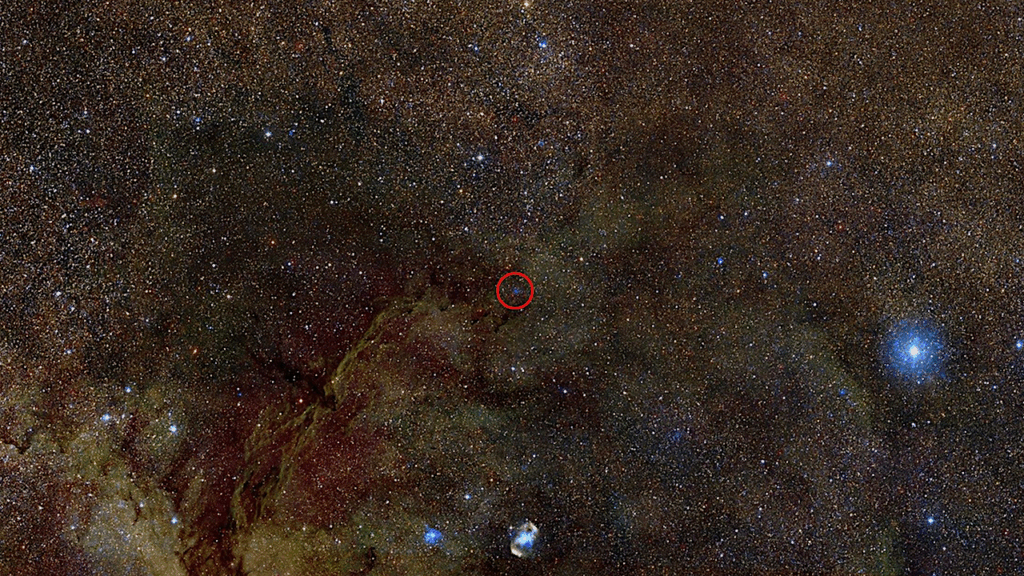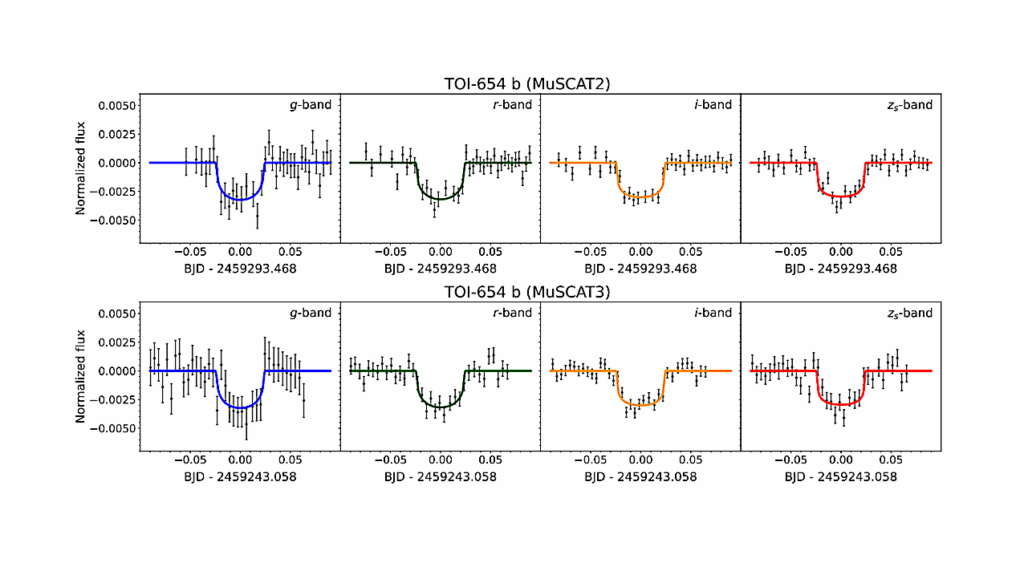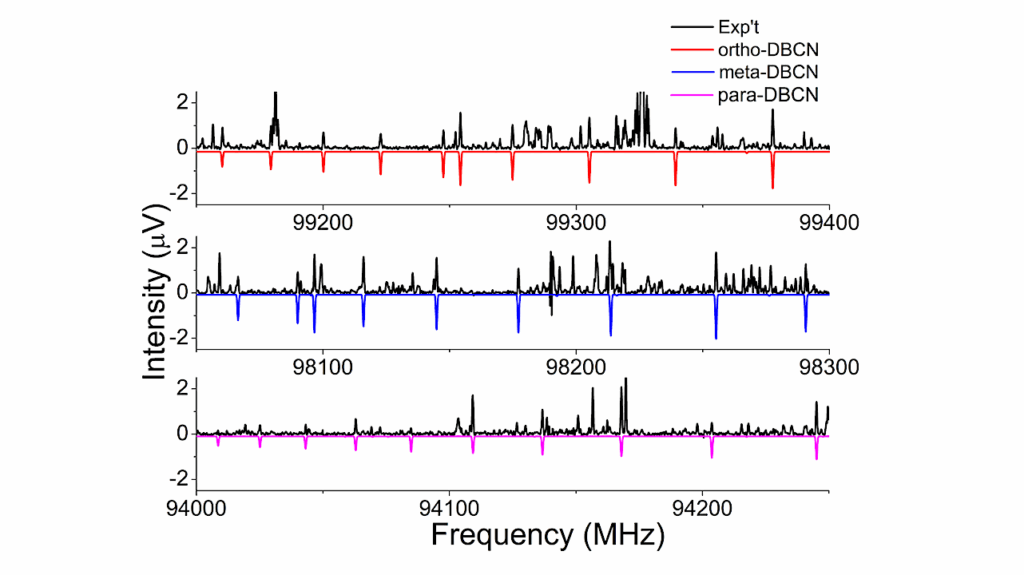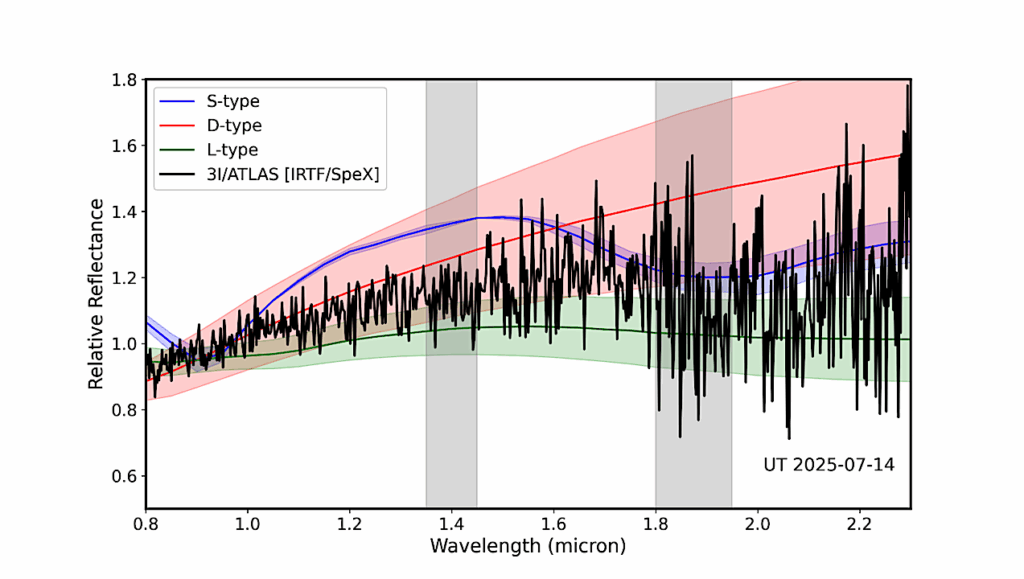Updated Masses for the Gas Giants in the Eight-Planet Kepler-90 System Via Transit-Timing Variation and Radial Velocity Observations

The eight-planet Kepler-90 system exhibits the greatest multiplicity of planets found to date. All eight planets are transiting and were discovered in photometry from the NASA Kepler primary mission.
The two outermost planets, g (Pg = 211 d) and h (Ph = 332 d) exhibit significant transit-timing variations (TTVs), but were only observed 6 and 3 times respectively by Kepler.
These TTVs allow for the determination of planetary masses through dynamical modeling of the pair’s gravitational interactions, but the paucity of transits allows a broad range of solutions for the masses and orbital ephemerides. To determine accurate masses and orbital parameters for planets g and h, we combined 34 radial velocities (RVs) of Kepler-90, collected over a decade, with the Kepler transit data.
We jointly modeled the transit times of the outer two planets and the RV time series, then used our two-planet model to predict their future times of transit. These predictions led us to recover a transit of Kepler-90 g with ground-based observatories in May 2024.
We then combined the 2024 transit and several previously unpublished transit times of planets g and h with the Kepler photometry and RV data to update the masses and linear ephemerides of the planets, finding masses for g and h of 15.0±1.3M⊕, and 203±16M⊕ respectively from a Markov Chain Monte Carlo analysis.
These results enable further insights into the architecturally rich Kepler-90 system and pave the way for atmospheric characterization with space-based facilities.

David E. Shaw, Lauren M. Weiss, Eric Agol, Karen A. Collins, Khalid Barkaoui, Cristilyn N. Watkins, Richard P. Schwarz, Howard M. Relles, Chris Stockdale, John F. Kielkopf, Fabian Rodriguez Frustaglia, Allyson Bieryla, Joao Gregorio, Owen Mitchem, Katherine Linnenkohl, Adam Popowicz, Norio Narita, Akihiko Fukui, Michaël Gillon, Ramotholo Sefako, Avi Shporer, Adam Lark, Amelie Heying, Isa Khan, Beibei Chen, Kylee Carden, Donald M. Terndrup, Robert Taylor, Dasha Crocker, Sarah Ballard, Daniel C. Fabrycky
Comments: 20 pages, 13 figures, 6 tables, accepted for publication in AJ
Subjects: Earth and Planetary Astrophysics (astro-ph.EP)
Cite as: arXiv:2507.13588 [astro-ph.EP] (or arXiv:2507.13588v1 [astro-ph.EP] for this version)
https://doi.org/10.48550/arXiv.2507.13588
Focus to learn more
Submission history
From: David Shaw
[v1] Fri, 18 Jul 2025 00:19:08 UTC (5,738 KB)
https://arxiv.org/abs/2507.13588
Astrobiology, exoplanet,








